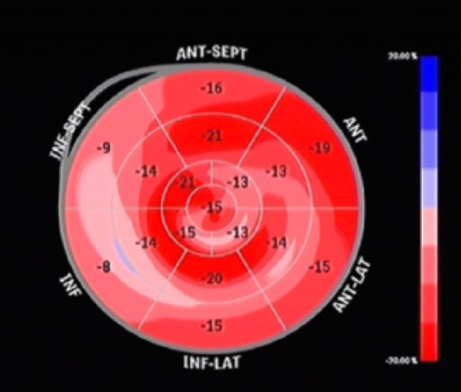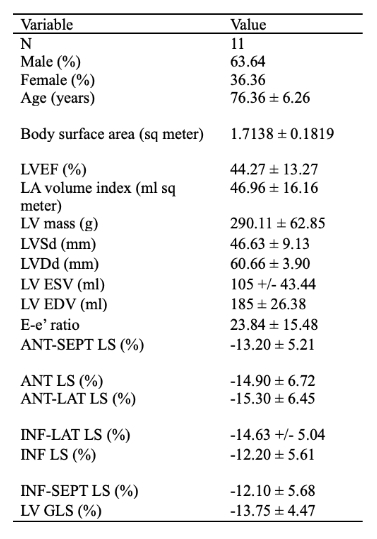Final ID: Sa2184
Left ventricular function and myocardial longitudinal strain analysis in patients with Chagas disease: case series and systematic literature review.
Abstract Body (Do not enter title and authors here): Introduction: Chagas disease is a significant cause of tropical disease-related mortality. It presents in acute, indeterminate, and chronic phases, with chronic cardiomyopathy being the most severe form, leading to heart failure, arrhythmias, and sudden cardiac death. Conventional echocardiography often fails to detect early subclinical dysfunction, whereas Global longitudinal strain (GLS) may provide earlier detection of myocardial strain abnormalities. Left ventricular dysfunction is an independent predictor of mortality and GLS is an emerging modality that may aid early detection of cardiac involvement. Objective: This study aims to compare left ventricular function using multiple echocardiographic parameters between patients with indeterminate and chronic forms of Chagas disease and to perform a systematic literature review. Methods:The observational study involved 11 patients (mean age 76.36 years) from a tertiary hospital in Brazil, classified as indeterminate (45%) or chronic (55%). Serological confirmation and detailed echocardiographic evaluations, including GLS, were performed. A systematic literature review was also conducted on GLS in Chagas cardiomyopathy. Results: Patients with chronic Chagas disease showed significantly lower LVEF and GLS compared to those with the indeterminate form. Segmental strain analysis revealed consistent contractility reductions across specific ventricular segments in both groups. Discussion: Chagas cardiomyopathy often leads to dilated cardiomyopathy with significant arrhythmias and heart failure. GLS can detect early myocardial changes even before a significant drop in LVEF, indicating its potential for early diagnosis and better management of Chagas cardiomyopathy. Literature review supports the use of GLS for detecting early cardiac involvement and predicting adverse outcomes. Conclusion: Incorporating GLS with conventional echocardiography offers enhanced early detection of myocardial changes in Chagas disease. While promising, further research is needed to establish the clinical significance and impact of these techniques in routine practice.
More abstracts on this topic:
A Hemodynamic Warning Sign: Continuous Mitral Regurgitation and Normal Sinus Rhythm
Mahi Ishani, Chowdhury Mahdi, Madan Hritik, Garg Vaani
A Diagnosis Dilemma of Positional Hypoxia: Scoliosis-Mediated Platypnea-Orthodeoxia SyndromeAdemuwagun Christianah, Arjoon Roy, Seth Paula, Chang Gene, Ibe Oby



